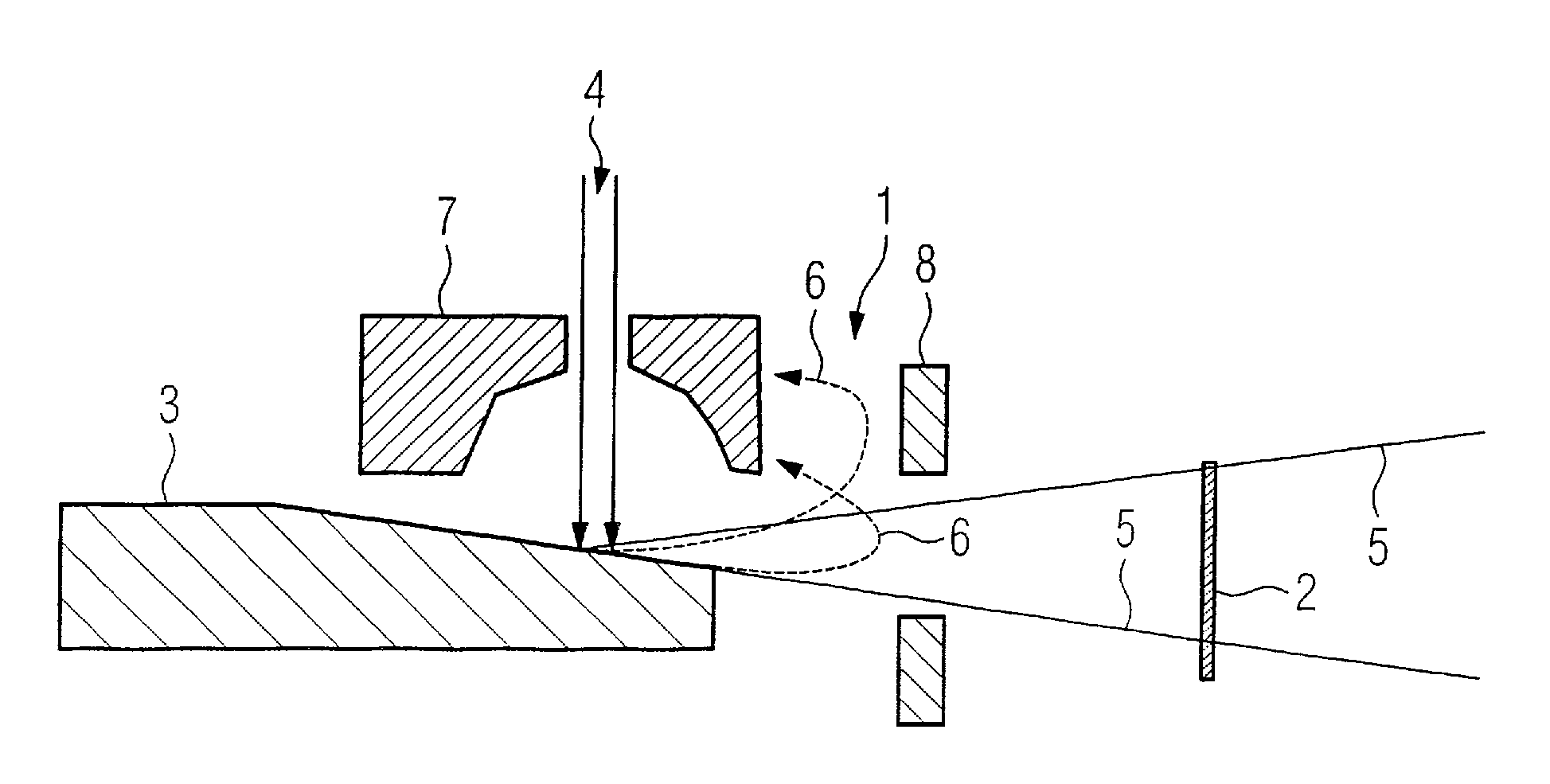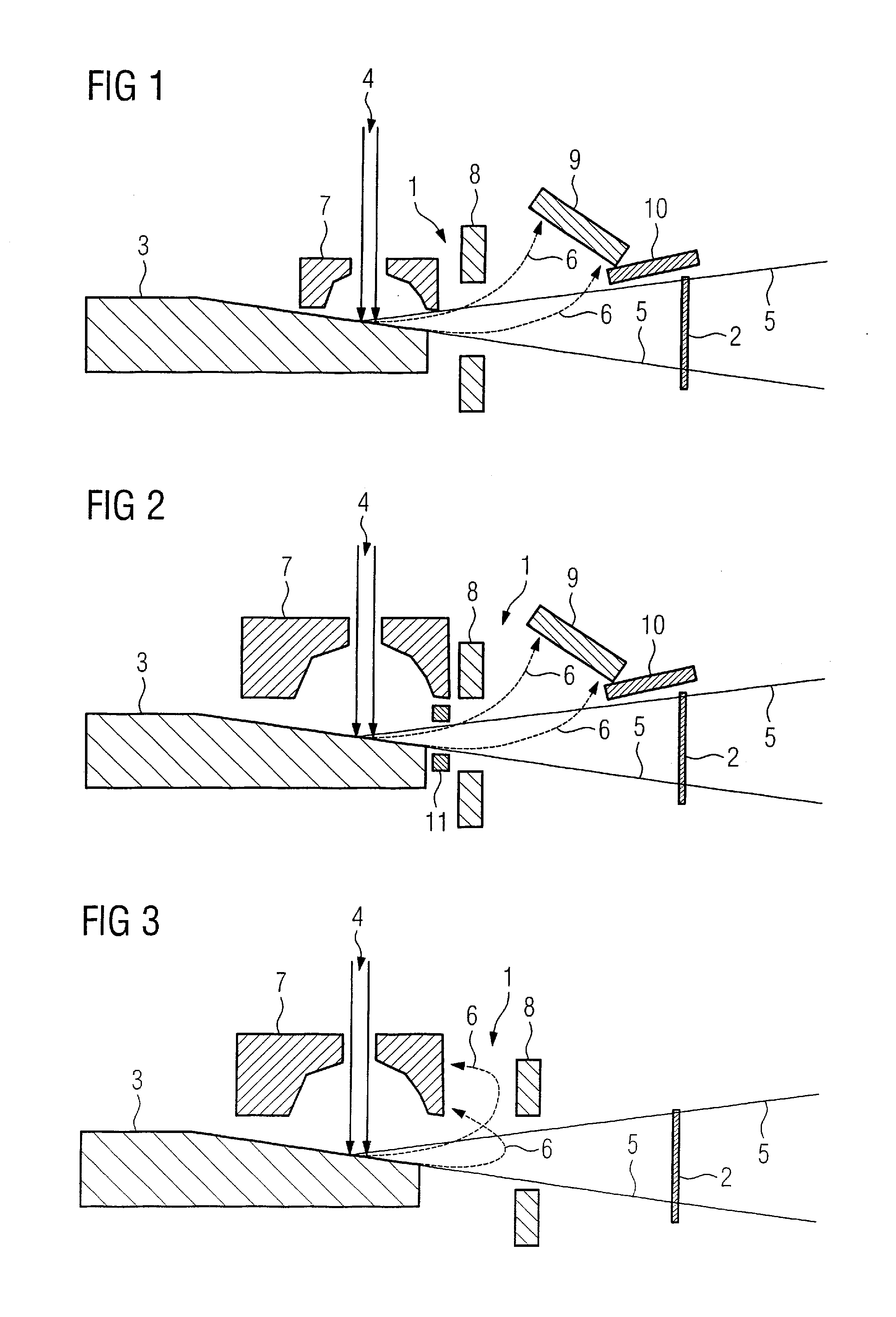X-ray tube with backscatter protection
a technology of x-ray tube and backscatter protection, which is applied in the field of x-ray tube, can solve the problems of significant degradation of image quality that can be achieved with x-ray tube, thermal engineering protection of vacuum housing in opposition to the addition of heating of anodes, and inability to achieve continuous x-ray intensity, etc., and achieves high reliability and constant x-ray intensity
- Summary
- Abstract
- Description
- Claims
- Application Information
AI Technical Summary
Benefits of technology
Problems solved by technology
Method used
Image
Examples
Embodiment Construction
[0034]A backscatter electron capture device 1 that, according to the invention, is arranged in a vacuum housing of an x-ray tube is respectively shown in FIGS. 1 through 3 in the region of an x-ray exit window 2.
[0035]An anode 3 that generates usable x-ray radiation 5 upon impact of electrons 4 that were generated in an electron source (for example a cathode; not shown in FIGS. 1 through 3) is respectively arranged in the vacuum housing, which usable x-ray radiation 5 exits from the vacuum housing through the x-ray exit window 2.
[0036]Approximately 50% of the electrons 4 striking the anode 3 (which electrons generate the usable x-ray radiation) are scattered back. In the following these electrons are designated as backscatter electrons 6. Normally the backscatter electrons 6 possess no pronounced preferential direction; thus they scatter approximately isotropically in all spatial directions.
[0037]The backscatter electron capture device 1 respectively shown in FIGS. 1 through 3 affec...
PUM
 Login to View More
Login to View More Abstract
Description
Claims
Application Information
 Login to View More
Login to View More - R&D
- Intellectual Property
- Life Sciences
- Materials
- Tech Scout
- Unparalleled Data Quality
- Higher Quality Content
- 60% Fewer Hallucinations
Browse by: Latest US Patents, China's latest patents, Technical Efficacy Thesaurus, Application Domain, Technology Topic, Popular Technical Reports.
© 2025 PatSnap. All rights reserved.Legal|Privacy policy|Modern Slavery Act Transparency Statement|Sitemap|About US| Contact US: help@patsnap.com


